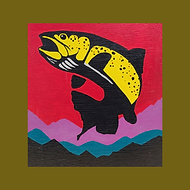Fly tying is a captivating and rewarding aspect of fly fishing that allows anglers to craft their own lures, adding a personal touch to their fishing experience. For beginners, stepping into the world of fly tying can seem daunting with its myriad of tools, materials, and techniques. However, it is a craft that combines patience, creativity, and a love for detail, making it an enjoyable and fulfilling hobby. Starting with simple patterns and basic tools, such as hooks, feathers, and thread, novices can quickly grasp the fundamental skills. With each fly tied, there’s an opportunity to understand the intricate details that make each fly unique and effective.
One of the best ways for beginners to start fly tying is by focusing on creating a few basic patterns. Patterns like the Woolly Bugger, Hare’s Ear Nymph, and Pheasant Tail Nymph are great starting points due to their simplicity and effectiveness in catching fish. These patterns not only teach the essential techniques, such as wrapping thread and securing materials, but also provide a strong foundation for more complex creations in the future. As beginners progress, they can experiment with different materials and colors, gradually developing their own style and preference, which is one of the joys of fly tying.
Fly tying is more than just creating lures; it’s a form of artistic expression and a meditative practice. As beginners refine their skills, they’ll find themselves immersed in the meticulous process, which offers a wonderful escape from the daily grind. The satisfaction of catching a fish on a fly you’ve tied yourself is unparalleled, adding a new dimension to the fishing experience. With the wealth of online resources, videos, and local fly tying clubs, beginners can easily find support and inspiration to nurture their fly tying journey. So, pick up those tools, start experimenting, and let your creativity flow as you embark on this rewarding adventure.
Stay tuned as we continue our fly tying posts in part 2.


